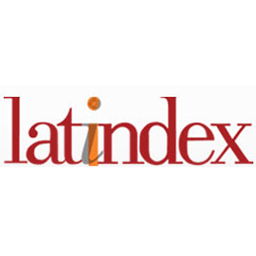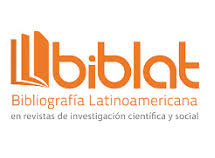¿Afecta la corrupción a la eficiencia técnica de los países de Norteamérica?
Resumen
La corrupción es un fenómeno que está presente en la mayoría de las sociedades contemporáneas y en sus economías. Su incidencia en las actividades económicas puede mostrar dos caras de la misma moneda: puede contribuir a eficientarlas, o bien, debilitarlas. En ambos casos tiene consecuencias que es necesario identificar; por ello, el objetivo de esta investigación es analizar el efecto de la corrupción sobre la eficiencia técnica de los países de Norteamérica, al objeto de identificar si esta se beneficia o perjudica. Así, se toman como referentes teóricos las hipótesis de engrasar o desgastar las ruedas. Para estimar la eficiencia técnica se emplea la metodología de Análisis de Fronteras Estocásticas para un panel de datos. Los resultados permiten identificar que, en México, la corrupción actúa como una grasa que hace más eficiente a su economía. En Estados Unidos y Canadá desgasta a sus economías, reduciendo marginalmente su eficiencia técnica.
Palabras clave
Texto completo:
PDFReferencias
Agostino, Giorgio, Paul Dunne y Luca Pieroni (2016). “Government Spending, Corruption and Economic Growth”, en World development. Vol. 84, Agosto, pp. 190-205. https://doi.org/10.1016/j.worlddev.2016.03.011
Aidt, Toke, Jayasri Dutta y Vania Sena (2008) “Governance regimes, corruption and growth: Theory and evidence, en Journal of Comparative Economics, vol. 36, núm. 2, pp. 195–220. https://doi.org/10.1016/j.jce.2007.11.004
Akinlabi, Ade Oyedijo, Hamed Babatunde y M.A. Awoniyi (2011) “Corruption, Foreign Direct Investment and Economic Growth in Nigeria: An Empirical Investigation”, en Journal of Research in International Business Management, vol. 1, núm.. 9, pp. 278-292.
Altamirano, Melina y Sandra Ley (2020). Economía, seguridad y corrupción en la elección presidencial de 2018. Temas de campaña y preferencias electorales en México, en Política y gobierno, vol. 27, núm. 2, pp. 1-39.
Bailey, D.H. (1966) “The effects of corruption in a developing nation”. Western Political Quarterly 19: 719–732. Reprint in A.J. Heidenheimer, M. Johnston and V.T. LeVine (Eds.), Political corruption: A handbook, 934–952 (1989). Oxford: Transaction Books.
Bardhan, Pranab (1997) “Corruption and development: A review of issues”, en Journal of Economic Literature, vol. 35, pp. 1320–1346. https://www.jstor.org/stable/2729979
Battese, G. E. y T. J. Coelli (1995) “A model for technical inefficiency effects in a stochastic frontier production function for panel data”, en Empirical Economics, vol. 20, pp. 325-332. https://doi.org/10.1007/BF01205442
Beck, Paul J. y Michael W. Maher (1986) “A comparison of bribery and bidding in thin markets”, en Economics Letters, vol. 20, pp. 1–5. https://doi.org/10.1016/0165-1765(86)90068-6
Brunetti Aymo y Beatrice Weder (1998) “Investment and institutional uncertainty: A comparative study of different uncertainty measures”, en Weltwirtschaftliches Archiv, col. 134, pp. 513–533. https://www.jstor.org/stable/40440663
Campos J. Edgardo, Donald Lien y Sanjay Pradhan (1999) “The impact of corruption on investment: Predictability matters”, en World Development, vol. 27, pp. 1059–1067. https://doi.org/10.1016/S0305-750X(99)00040-6
Chandan, Sharma y Mitra Arup (2019) “Corruption and Economic Growth: Some New Empirical Evidence from a Global Sample”, en Journal of international development, vol. 31, núm. 8, noviemnre, pp. 691-719. https://doi.org/10.1002/jid.3433
Córdova Guzmán, Jassel y Aldo F. Ponce (2017) “Los tipos de corrupción y la satisfacción con los servicios públicos. Evidencia del caso mexicano”, en Región y Sociedad, vol. 29, núm. 70, septiembre-diciembre, pp. 231-262. DOI: 10.22198/rys.2017.70.a344
Dridi, Mohamed (2013) “Corruption and Economic Growth: The Transmission Channels”, en Journal of Business Studies Quarterly, vol. 4, núm. 4, junio, pp. 121-152. https://mpra.ub.uni-muenchen.de/47873/
Egunjobi, T. Adenike (2013) “An econometric analysis of the impact of corruption on economic growth in Nigeria#, en Journal of Business Management and Economics, vol. 4, núm. 3, marzo, pp. 54-65, 2013. https://www.e3journals.org › 1362973871_Adenike
Grandes, Martin y Ariel Coremberg (2020) “"Corruption accounting and growth: towards a new methodology", en Journal of Financial Crime, vol. 27, núm. 1, pp. 43-57. https://doi.org/10.1108/JFC-04-2019-0039
Heckelman, Jac C. y Benjamin Powell (2010) “Corruption and the institutional environment for growth”, en Comparative Economic Studies, vol. 53, núm. 3, pp. 351-378. DOI:10.1057/ces.2010.14.
Hernández Verme, Paula Lourdes y Paulina Herrera Madrid (2018) “Corrupción, Gobernabilidad y Crecimiento Económico. Un estudio empírico” en Acta univ [online]. vol.28, pp.31-41. https://doi.org/10.15174/au.2018.2006.
Huntington, S.P. (1968) Political order in changing societies, New Haven, Yale University Press.
Jain, Arvind K. (2001) “Corruption: A review”, en Journal of Economic Surveys, vol. 15, pp. 71–121. https://doi.org/10.1111/1467-6419.00133
Krueger, Anne O. (1974) “The Political Economy of the Rent-Seeking Society”, en American Economic Review, vol. 64, núm. 3, pp. 291–303. https://www.jstor.org/stable/1808883
Kurer, Oskar (1993) “Clientelism, corruption and the allocation of resources”, en Public Choice, vol. 77, pp. 259–273. https://doi.org/10.1007/BF01047869
Lambsdorff, Johann Graf (2003) “How Corruption Affects Productivity” KYKLOS, vol. 56, núm. 4, pp. 457–474.
Lederman Daniel, Norman V. Loayza y Rodrigo R. Soares (2005) “Accountability And Corruption: Political Institutions Matter”, en Economics & Politics. 0954-1985, vol. 17, núm. 1. Marzo, pp. 1-35. https://doi.org/10.1111/j.1468-0343.2005.00145.x
Leff, Nathaniel H. (1964) “Economic Development Through Bureaucratic Corruption”, en The American Behavioral Scientist, vol. 8, núm. 3, pp. 8-14. https://doi.org/10.1177/000276426400800303
Leys, Colin (1965) “What is the problem about corruption?” Journal of Modern African Studies 3: 215–230. Reprint in A.J. Heidenheimer, M. Johnston and V.T. LeVine (Eds.), Political corruption: A handbook, 51–66, 1989. Oxford: Transaction Books. DOI: https://doi.org/10.1017/S0022278X00023636
Lien, Da-Hsiang Donald (1986) “A note on competitive bribery games”, en Economics Letters, vol. 22, pp. 337–341. https://doi.org/10.1016/0165-1765(86)90093-5
Lopez, Jennifer (2019) "Corruption and its Effect on Economic Development in Chile, Mexico, and Brazil," en Governance: The Political Science Journal at UNLV, vol. 6, pp. 1-32. https://digitalscholarship.unlv.edu/governance-unlv/vol6/iss1/4
Mankiw, Gregory y Michael D. Whinston (1986) “Free entry and social inefficiency”, en Rand Journal of Economics, vol. 17, pp. 48–58. https://www.jstor.org/stable/2555627
Mauro, Paolo (1995) “Corruption and growth”, en The Quarterly Journal of Economics, vol. 110, núm. 3, Agosto, pp. 681-712. https://doi.org/10.2307/2946696
Mauro, Paolo (1998) “Corruption and the composition of government expenditure”, en Journal of Public Economics, vol. 69, pp. 263–279. https://doi.org/10.1016/S0047-2727(98)00025-5
Mauro, Paolo (2004) “The Persistence of Corruption and Slow Economic Growth”, en IMF Staff Papers. Vol. 51, No. 1. International Monetary Fund. https://doi.org/10.2307/30035860
Mo, Pak Hung (2001) “Corruption and Economic Growth”, en Journal of Comparative Economics, vol. 29, pp. 66–79. https://doi.org/10.1006/jcec.2000.1703
Myrdal, G. (1968) Asian drama: An enquiry into the poverty of nations, vol 2. New York: The Twentieth Century Fund. Reprint in A.J. Heidenheimer, M. Johnston and V.T. LeVine (Eds.), Political corruption: A handbook, 953–961, 1989. Oxford: Transaction Books.
Nguyen Ngoc, Anh, Minh, Minh Nguyen Ngoc y Binh Tran-Nam (2016) “Corruption and economic growth, with a focus on Vietnam”, en Crime Law and Social Change, vol. 65, pp. 307–324. https://doi.org/10.1007/s10611-016-9603-0
Palestina Duarte, Isaac Emmanuel (2018) “Corrupción y crecimiento económico: las percepciones de la sociedad colombiana”, en CES Derecho, vol. 9, núm. 1, pp. 59–72. https://doi.org/10.21615/cesder.9.1.4
Pellegrini, Lorenzo y Reyer Gerlagh (2004) “Corruption’s Effect on Growth and its Transmission Channels”, en YKLOS, vol. 57, núm. 3, pp. 429–456. https://doi.org/10.1111/j.0023-5962.2004.00261.x
Pierre-Guillaume, Méon y Khalid Sekkat (2005) “Does corruption grease or sand the wheels of growth?”, en Public Choice, vol. 122, núm. ½, pp. 69–97. https://www.jstor.org/stable/30026673
Pierre-Guillaume Méon y Laurent Weill (2010) “Is Corruption an Efficient Grease?”, en World Development, vol. 38, núm. 3. Marzo-abril, pp. 244-259. https://doi.org/10.1016/j.worlddev.2009.06.004
Tanzi, V. y H. Davoodi (1997) “Corruption, public investment, and growth”, en International Monetary Fund Working Paper: WP/97/139.
Treisman, Daniel (2000) “The causes of corruption: a cross-national study”, en Journal of Public Economics, vol. 76, pp. 399–457. https://doi.org/10.1016/S0047-2727(99)00092-4
De Vaal, Albert y Wouter Ebben (2011) “Institutions and the relation between corruption and economic growth”, en Review of Development Economics, vol. 15, núm. 1, pp. 108-123. https://doi.org/10.1111/j.1467-9361.2010.00596.x
Vasquez, Freddy A. y Giovanni E. Reyes (2019) “Relación existente entre el crecimiento económico, la corrupción y la competitividad global en 20 países latinoamericanos y sus tratados de integración” en Revista espacios. vol. 40, núm. 27, pp. 27- 41.
World Bank (2021a) “Governance Indicators”. Fecha de consulta: 7 de octubre de 2021. En https://databank.bancomundial.org/Governance-Indicators/id/2abb48da#
World Bank 2021b “World Development Indicators”. Fecha de consulta: 7 de diciembre de 2021. En https://databank.bancomundial.org/source/world-development-indicators
Enlaces refback
- No hay ningún enlace refback.
Copyright (c) 2023 Regiones y Desarrollo Sustentable

Este obra está bajo una licencia de Creative Commons Reconocimiento 4.0 Internacional.
REGIONES Y DESARROLLO SUSTENTABLE
Año XXIII, No. 44, Enero-Diciembre, 2023, es una revista de publicación continua editada por El Colegio de Tlaxcala, A.C., Avenida Melchor Ocampo No. 28, Col. San Pablo Apetatitlán, Apetatitlán de Antonio Carvajal, Tlaxcala, C. P. 90600 Tel. 52 (246) 46 4 52 33, ext. 1135, http://www.coltlax.edu.mx/openj/index.php/ReyDS, rev_regionesydesarrollosustentable@coltlax.edu.mx Editor responsable: Arturo Juárez Martínez. Reserva de Derechos al Uso Exclusivo No., ISSN:2594-1429, otorgados por el Instituto Nacional de Derecho de Autor. Responsable de la última actualización de este número, Departamento de Ediciones de El Colegio de Tlaxcala, A.C., Arturo Juárez Martínez, Avenida Melchor Ocampo No. 28, Col. San Pablo Apetatitlán, Apetatitlán de Antonio Carvajal, C.P. 90600, fecha de última modificación: 02 de febrero de 2024.







